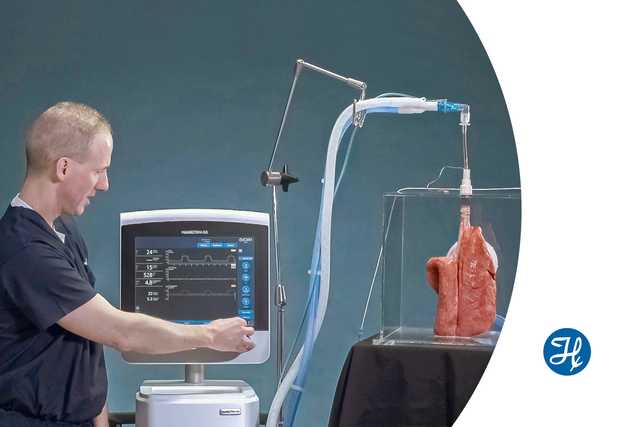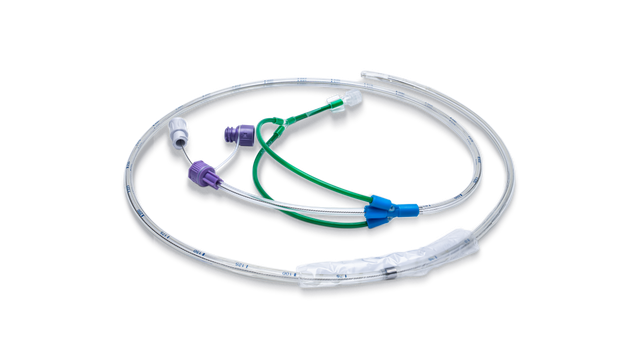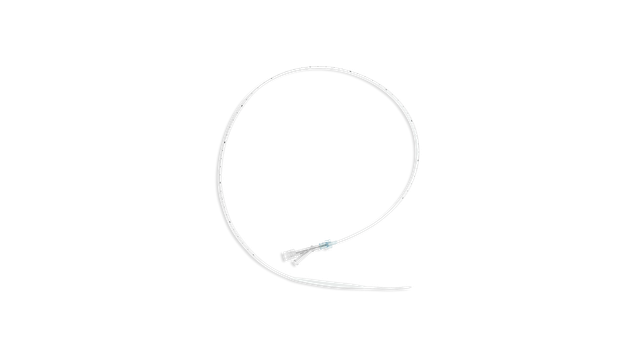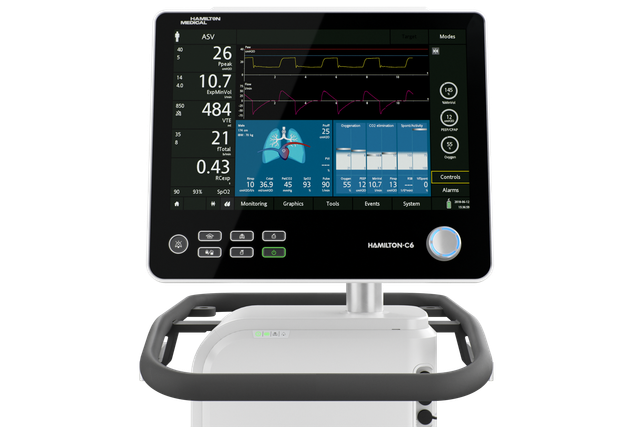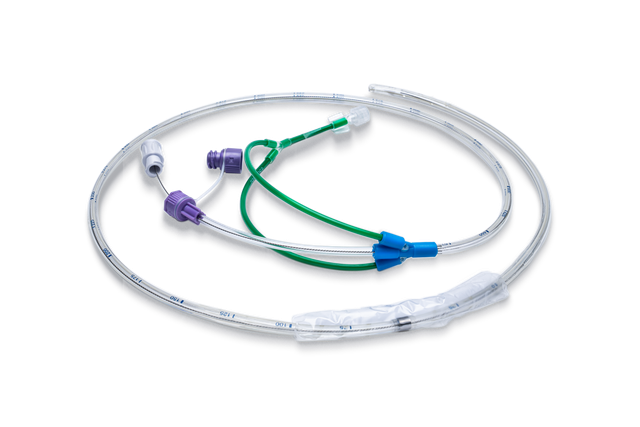
Datos obtenidos desde el interior. Medición de la presión esofágica
La medición de la presión esofágica (Pes) es un método de monitorización mínimamente invasivo que nos permite determinar la presión transpulmonar.
El método más frecuente de medición de la Pes consiste en utilizar un globo lleno de aire integrado en un catéter esofágico.
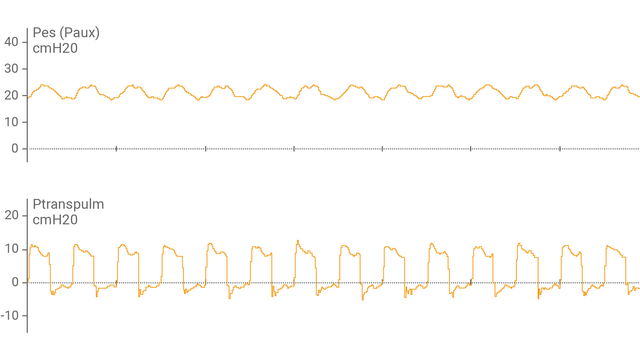
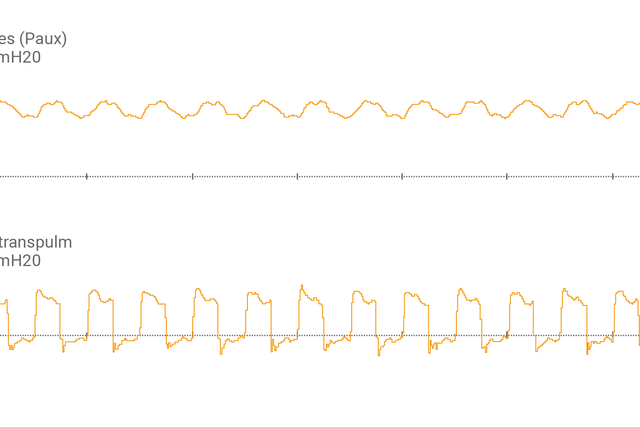
Ver es creer. Pes y Ptranspulm en pantalla
Tras haber conectado el catéter con globo esofágico al puerto auxiliar y haber confirmado su correcta colocación, el respirador muestra la presión esofágica (Pes) y la presión transpulmonar (Ptranspulm) en forma de onda.
Puede medir la Ptranspulm estática utilizando maniobras de pausa inspiratoria y espiratoria.
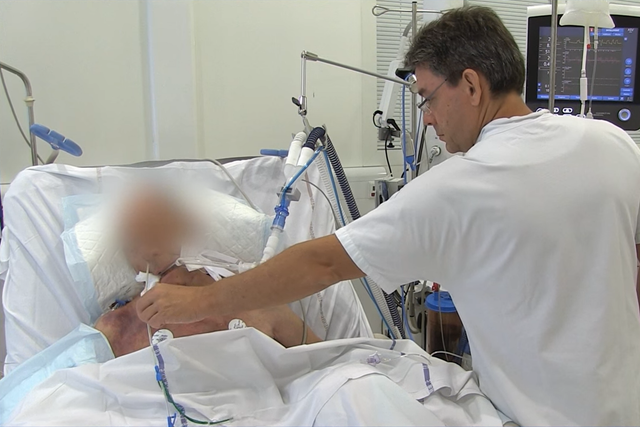
Esfuerzos conjuntos. Evaluación de la capacidad de reclutamiento pulmonar
Para valorar la capacidad de reclutamiento y llevar a cabo maniobras de reclutamiento, la presión transpulmonar también se puede utilizar junto con la herramienta P/V Tool® Pro.
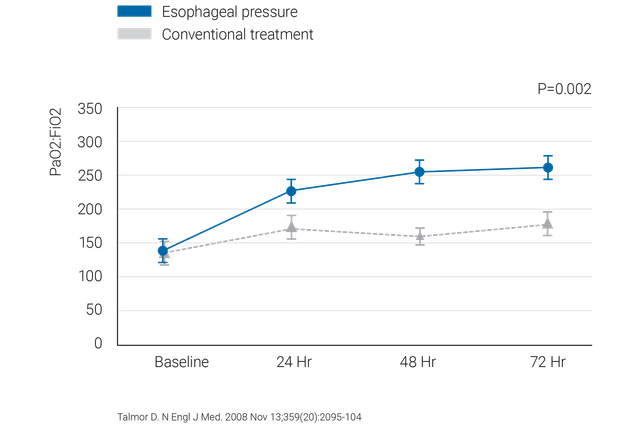
¿Cuáles son las ventajas? Examinemos las pruebas
- El ajuste de PEEP basado en la presión transpulmonar mejoró la compliance y la oxigenación en pacientes con SDRA (
Talmor D, Sarge T, Malhotra A, et al. Mechanical ventilation guided by esophageal pressure in acute lung injury. N Engl J Med. 2008;359(20):2095‑2104. doi:10.1056/NEJMoa07086381 ). - La aplicación de la presión transpulmonar objetivo mejoró la elasticidad y las presiones de trabajo, y puede estar asociada a una mejora de la mortalidad a los 28 días (
Baedorf Kassis E, Loring SH, Talmor D. Mortality and pulmonary mechanics in relation to respiratory system and transpulmonary driving pressures in ARDS. Intensive Care Med. 2016;42(8):1206‑1213. doi:10.1007/s00134‑016‑4403‑72 ). - La monitorización de la presión transpulmonar puede evitar el uso de ECMO en los pacientes más graves (
Grasso S, Terragni P, Birocco A, et al. ECMO criteria for influenza A (H1N1)‑associated ARDS: role of transpulmonary pressure. Intensive Care Med. 2012;38(3):395‑403. doi:10.1007/s00134‑012‑2490‑73 ). - Una estrategia de ventilación guiada mediante presión transpulmonar puede aumentar la proporción de pacientes con SDRA grave retirados con éxito de ECMO (
Wang R, Sun B, Li X, et al. Mechanical Ventilation Strategy Guided by Transpulmonary Pressure in Severe Acute Respiratory Distress Syndrome Treated With Venovenous Extracorporeal Membrane Oxygenation. Crit Care Med. 2020;48(9):1280‑1288. doi:10.1097/CCM.00000000000044454 ). - La medición de la presión esofágica (Pes) es la técnica de referencia para evaluar el esfuerzo respiratorio y el trabajo respiratorio (
Bertoni M, Spadaro S, Goligher EC. Monitoring Patient Respiratory Effort During Mechanical Ventilation: Lung and Diaphragm‑Protective Ventilation. Crit Care. 2020;24(1):106. Published 2020 Mar 24. doi:10.1186/s13054‑020‑2777‑y5).5 ).

¡Siga aprendiendo! Recursos de formación sobre presión transpulmonar
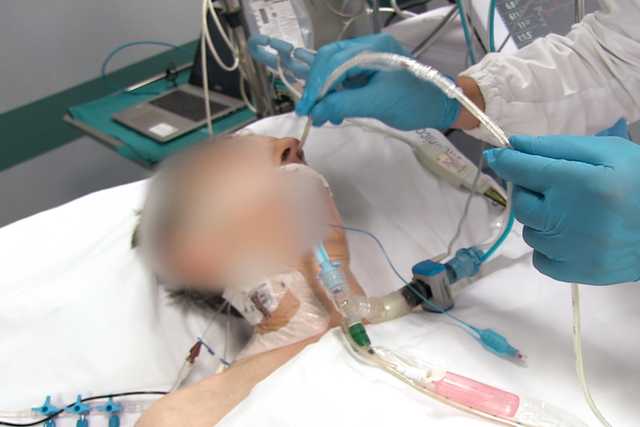
Todo es cuestión de técnica. Inserción de catéter esofágico con globo
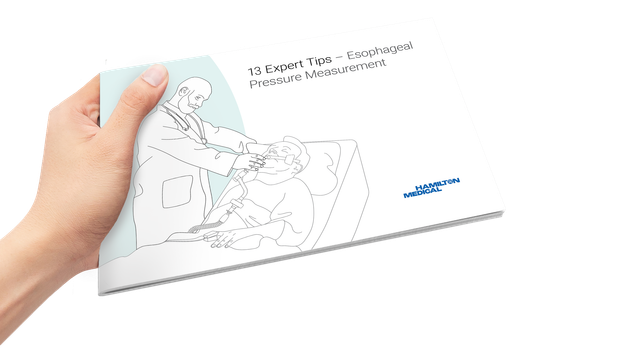
Libro electrónico gratuito
13 consejos de expertos. Medición de la presión esofágica
Recomendaciones probadas clínicamente sobre qué hacer y qué evitar a la hora de usar la medición de la presión esofágica en pacientes con SDRA.
Material fungible
Ofrecemos catéteres esofágicos con globo CooperSurgical y catéteres nasogástricos NutriVent.
Disponibilidad
La monitorización de la presión transpulmonar está disponible como característica estándar en los respiradores HAMILTON‑C6 y HAMILTON‑G5/S1.
Más información
Transpulmonary pressure measurement bibliography
Transpulmonary pressure measurement whitepaper
Esophageal balloon catheter reference card
Advanced procedure esophageal balloon catheter reference card
Ajuste de la PEEP mediante la monitorización de la presión transpulmonar
Referencias
- 1. Talmor D, Sarge T, Malhotra A, et al. Mechanical ventilation guided by esophageal pressure in acute lung injury. N Engl J Med. 2008;359(20):2095‑2104. doi:10.1056/NEJMoa0708638
- 2. Baedorf Kassis E, Loring SH, Talmor D. Mortality and pulmonary mechanics in relation to respiratory system and transpulmonary driving pressures in ARDS. Intensive Care Med. 2016;42(8):1206‑1213. doi:10.1007/s00134‑016‑4403‑7
- 3. Grasso S, Terragni P, Birocco A, et al. ECMO criteria for influenza A (H1N1)‑associated ARDS: role of transpulmonary pressure. Intensive Care Med. 2012;38(3):395‑403. doi:10.1007/s00134‑012‑2490‑7
- 4. Wang R, Sun B, Li X, et al. Mechanical Ventilation Strategy Guided by Transpulmonary Pressure in Severe Acute Respiratory Distress Syndrome Treated With Venovenous Extracorporeal Membrane Oxygenation. Crit Care Med. 2020;48(9):1280‑1288. doi:10.1097/CCM.0000000000004445
- 5. Bertoni M, Spadaro S, Goligher EC. Monitoring Patient Respiratory Effort During Mechanical Ventilation: Lung and Diaphragm‑Protective Ventilation. Crit Care. 2020;24(1):106. Published 2020 Mar 24. doi:10.1186/s13054‑020‑2777‑y


